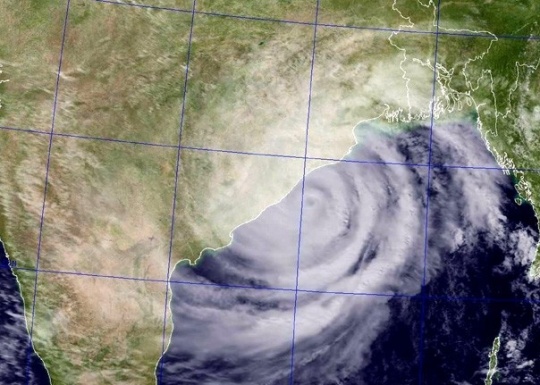 As meteorologists warned last week of a monster storm ploughing towards India's east coast, the country's disaster preparedness teams snapped into action, pre-positioning emergency response teams and supplies, and evacuating nearly a million people - ultimately saving countless lives.
As meteorologists warned last week of a monster storm ploughing towards India's east coast, the country's disaster preparedness teams snapped into action, pre-positioning emergency response teams and supplies, and evacuating nearly a million people - ultimately saving countless lives.Cyclone Phailin, India's fiercest storm in 14 years, smashed into the coastline of Andhra Pradesh and Odisha states over the weekend, flooded swathes of farmland and ripped apart tens of thousands of mud and-thatch homes
When Cyclone Phailin slammed into Odisha and neighbouring Andhra Pradesh with winds gusting at more than 200 kmph (125 mph), India was braced for the worst. A monster storm that hit the very same region 14 years ago had killed 10,000 people. But this time, the death toll was astonishingly low, at the latest count just 21.
 Early warnings which started five days before the storm's arrival, the pre-positioning of food rations and packaged drinking water in shelters, and the orderly - and sometimes forceful - evacuation of close to one million people saved many lives, said aid workers.
Early warnings which started five days before the storm's arrival, the pre-positioning of food rations and packaged drinking water in shelters, and the orderly - and sometimes forceful - evacuation of close to one million people saved many lives, said aid workers.As Phailin approached, authorities cancelled the holidays of civil servants during the popular Hindu Dussehra festival, deployed disaster response teams with heavy equipment and positioned helicopters and boats for rescue and relief operations.
Trains and flights were cancelled, roads barricaded and helplines and control rooms set up. Satellite phones and generators were dispatched to the heads of districts to ensure they remained in contact with the state capital.
The army, navy and air force were put on standby, and power and telecoms companies were instructed to be ready to restore damaged infrastructure as soon as possible after the storm.
Efforts to save people's livelihoods were also taken. Specific warnings were given to fishermen not to venture out to sea and to put their boats in safe places, while farmers were advised to harvest their standing crops.
It was a rare moment of relief in this disaster-prone country, one that has already been hailed as a triumph of official heroism and defies the Indian bureaucracy’s reputation for bungling and indecision. “It’s nothing short of a miracle that so many lives were spared. We were expecting the worst, but it just shows that all the time and investment put into preparing for such disasters by the authorities, civil society organisations and communities has paid off,” said Devendra Tak from Save the Children, the international NGO.